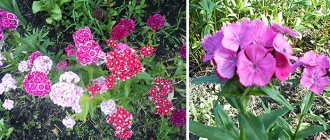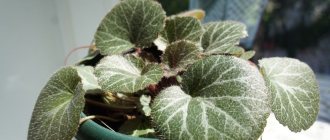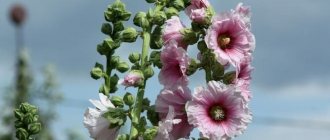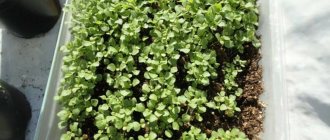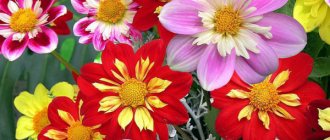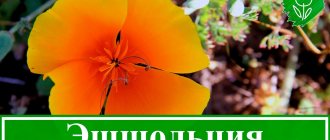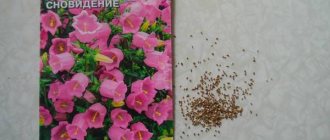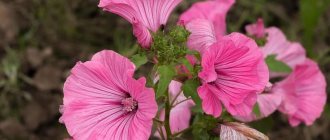Many gardeners like to plan their front garden or flower bed, that is, a combination of colors and sizes of flowers. Some experienced flower gardeners have concluded that carnations are perfect for any flower bed; they are a decoration for any flower arrangement.
But many questions arise about when to sow cloves for seedlings, when to plant them in open ground and how to care for them. You will find the answer to all these questions below, and so that you can definitely grow carnations, we share some tips and tricks.
Perennial carnation (lat. Dianthus) is widespread throughout the world. The botanical name of the herbaceous plant means divine flower
What varieties of cloves are grown from seeds?
Nature and breeders have developed about 300 varieties of cloves. Not all are suitable for growing from seeds. The most common varieties that are suitable for seed planting are:
- Dutch is a perennial, the main feature of which is considered to be long and abundant flowering, beginning in the second half of July and continuing until the onset of the first frost. Carnations bloom in different shades, but the most popular is red, edged with a white stripe.
- Chinese carnations can decorate any area in the garden or flower bed. The flowers are collected in inflorescences, the colors of which are very diverse and have a bluish tint.
- Pinnate is a small bush with double, densely packed flowers. This gives the variety a zest and unusualness.
- Turkish is an easy-to-care variety, the inflorescences of which on one bush can have different shades. Several inflorescences can form on one plant.
General information
The term "garden carnation" refers to a large group of plants belonging to the carnation family. Most are perennial flowering herbs native to the Mediterranean region. Some were bred artificially through hybridization. In our latitudes it is grown as an annual or biennial plant.
Garden carnations are bushy, branched, slender shrubs up to 60 cm high. The lower part can become woody with age, which makes the plant look like a subshrub. The leaves are entire, linear or linear-lanceolate, pointed at the apex, located opposite each other; green, sometimes covered with a bare green coating. The root system is superficial, poorly developed. Flowers can be single, up to 5-6 cm in diameter, or collected in umbrellas. The shape and color of the crown depend on the variety. Flowering is summer, some varieties last until October.
Photo of carnation flower
When to plant cloves for seedlings, in what month
To get strong and healthy seedlings, seeds begin to be sown at the end of February and finished in mid-April. Such a long sowing period is due to the fact that in this way it is possible to extend the flowering period of carnations in the flowerbed. Those bushes that are planted earlier will begin to bloom earlier, late plantings will bloom after them.
ATTENTION! You can sow seeds throughout the year, but it is better to do this from February to April.
Variety of species
In landscape design, garden carnations will look very harmonious both in group and individual compositions. Some varieties are even suitable for alpine flower beds and rockeries; they are planted along borders and dry streams. Garden carnations are often grown mixed into beds in the space vacated by early bulbous plants. These large-flowered species can form the basis of a flower arrangement, especially surrounded by greenery or against the backdrop of coniferous trees. This versatility is possible thanks to the large number of varieties.
Travyanka
Herbaceous perennial, common in Ukraine, Belarus and most of Russia; found even in Siberia and the Far East. In nature, it usually settles on sandy soils along rivers or on the edges of forests, and is found on roadsides. The shrub has a compact habit, about 25 cm high. The leaves are small, narrowly lanceolate, dark green. The flowers are small, with feathery petals of white, pinkish or purple. It blooms primarily in summer and may bloom again in early fall. Based on this species, there are many ground cover varieties with bright colors and different flowering periods.
Alpine carnation
This variety is easily recognized by its pubescent, soaring and wide plants up to 25 cm high. The leaves are small, narrow-lanceolate, glabrous, and green. The petals are jagged, jagged, and are usually pinkish, purple, or reddish in color. The first wave of flowering occurs in June-July, the second at the end of August. Under natural conditions, it most often settles in mountainous areas on limestone rocks. Found in the Alps and mountains of Slovenia, Italy and Austria. Used in gardening to decorate alpine rockeries, dry streams and rocky gardens.
Turkish cloves
Turkish carnation, also known as bearded carnation, is one of the most common species. It is undemanding to the soil and produces bright, abundant and long-lasting flowering with a strong aroma reminiscent of cloves. In nature, it most readily settles on rocky slopes at the edges of forests or along gravel-covered river beds.
This herbaceous perennial is easily identified by its bare, rounded stems and rough, lance-shaped leaves. Inflorescences are paniculate, up to 12 cm in diameter. The color is bright and contrasting, predominantly white, pinkish and reddish to dark burgundy. Petals are bicolored or tricolored, often with a border.
Turkish carnation blooms in the second year; grown as a biennial plant. Easily propagated from seeds. Every year many varieties appear, differing in the shape of the petals, pom-poms, color, size of the bush and inflorescences, and even aroma.
Knapp
Knappa is distinguished from other carnations by its bright yellow petals. This is a rare occurrence. Its inflorescences are similar in shape and smell to Turkish cloves. The shrub is compact, up to 35 cm tall; leaves and stems are gray-green. Knappa is grown as a biennial, blooming in the second year from July to August. Frost-resistant, but does not tolerate waterlogging very well. It is found in the wild only in Romania and Hungary.
Shabo
Garden carnation Shabot is one of the large-flowered varieties often grown for cut flowers. Flowers are solitary, up to 7 cm in diameter, flared or semi-flared; the petals are ruffled and deeply flared with pinkish, yellowish or reddish hues. Blooms from mid-summer until frost. Unlike most carnations, its root system is rhizomatous and strong. The stems can reach 60 cm in height. Leaves are opposite, linear, glabrous green, up to 12 cm long.
This species was bred artificially and is not found in the wild. It is grown everywhere, used not only in amateur gardening, but also in industrial gardening for landscaping parks and recreation areas. There are many varieties and hybrids, differing in the shape and color of the petals.
Dianthus pinnata
A neat, compact shrub up to 30 cm. The leaves are light green with well-defined longitudinal veins, which makes them look like feathers. The flowers are small, up to 3 cm, with a fringed, forked edge. The color spectrum is wide. The buds open en masse in late June - early July. In the wild, this flower prefers the calcareous soils of the European foothills.
Dutch carnation
Artificially bred species. It blooms profusely and for a long time from the beginning of summer until frost; in greenhouse conditions, flower buds bloom all year round. It has industrial value and is mass produced for cutting. The stems are dense, rounded, reaching 80 cm in height. The flowers are double or semi-double, often solitary. Many varieties have been bred with varied petal colors, white, reddish, pinkish, and cream colors predominate.
Chinese carnation
Chinese carnation, or, as it is also called, Amur carnation, grows mainly in Siberia, Primorye or the Far East on sandy or rocky slopes, or in meadows. It reaches a height of 40-45 cm. The stems are well branched; leaves lanceolate, pointed. Flowers up to 2.5 cm, can be pinkish, white, purple, violet or red.
It is a biennial plant, but blooms in the first year, from June to the end of August. Chinese carnation is a winter-hardy variety. He developed several popular hybrid series, the most famous of which is the Lilipot garden carnation. Its dwarf bushes can even be planted on windowsills. It comes in a variety of colors, including white, reddish, pinkish and carmine, and is usually sold as a seed mixture.
Planting a flower for seedlings depending on the region
Taking into account the timing of planting, it is important to take into account the characteristics of the growing regions. Each region has its own climatic characteristics that can affect the period and abundance of flowering.
In the southern regions, the climate is warm, which allows flower growers to receive seedlings earlier, and, therefore, the bushes will bloom faster.
The length of summer also affects the duration of flowering. In the southern regions, you can plant flowers for seedlings both in February and April.
The climate of the central regions is unpredictable and this can affect the carnation. There is no need to rush to sow here. It is better to start planting in March so that the carnation does not outgrow and form buds before it is planted in the soil. If this happens, the carnation takes a long time and has difficulty adapting, which does not have a very good effect on flowering.
But in the northern regions, where summer is late and short, it is better to sow in mid-March and not delay until April. Late shoots will not have time to form buds and will not bloom at all.
ATTENTION! When planting carnations, weather forecasters' forecasts should also be taken into account. In recent years, the climate in the regions has been changing, and the weather can bring unexpected surprises.
Description
Perennial garden carnation is a plant that is characterized by short flowering and in our regions is grown mainly for no more than two seasons. It grows in the form of a small shrub, the height of the stems reaches 60 cm. The rhizome is poorly developed, lies shallow - about 10-20 cm. The flowers are single or collected in small inflorescences, depending on the variety they are double, semi-double or simple. Their colors are different.
The stem is thin, strong, the leaves are usually narrow, colored dull green or bluish-green. At the end of the flowering period, fruits appear on the stems - seed pods. The color of the seeds is brown or brown.
Common types
If you decide to grow garden carnations on your plot, then, first of all, you need to decide on the type. This is not easy to do, since the species and, of course, varietal diversity of this plant is quite wide, but at the same time there is a very high chance of making your flower garden the most vibrant, colorful and original.
So, let's look at the most common types of garden carnations with descriptions and photos.
- Dutch. This species was obtained by selecting the most beautiful carnations. It is characterized by the longest flowering period - from the beginning of summer until the first frost. It blooms brightly, colorfully, wildly.
On a note! In countries with warm climates, Dutch carnations can bloom almost all year round. Its flowering in such regions stops only during rainy periods!
- Cirrus. The plant forms into a neat bush with emerald foliage. A characteristic feature of varieties of this type of garden carnation is the appearance of the petals - they have longitudinal slits, which is why the flower seems to be strewn with feathers. The diameter of one flower is about 3 cm. It blooms throughout June-July and gives the garden a bright palette. Flower color ranges from white to dark red.
- Shabot. During the flowering period, it produces large flowers of various colors: pink, yellow, burgundy, scarlet, etc. The aroma is bright and persistent. The flowers are usually double, and their petals can be corrugated, somewhat curved, simple or folded into a delicate bud.
- Turkish. One of the most unpretentious species, which produces incredibly colorful flowering and gives a delicate fragrance. The flowers are collected in neat inflorescences, the length of which can reach 12 cm. The flower is unusually beautiful and can contain two or three shades at once. There is often a border on the petals.
When to plant cloves for seedlings in 2022 according to the lunar calendar
As with planting all garden crops, it is recommended to plant carnations on favorable days, when the moon is in its waxing phase. It is this period that has a beneficial effect on growth, as well as the formation and strengthening of the root system.
Favorable days for planting carnations in 2022 according to the lunar calendar
Favorable days in 2022 for planting are:
| January | 3-17 |
| February | 2-15 |
| March | 3-17 |
| April | 2-15 |
| May | 1-15 |
| June | 1-13, 30 |
| July | 1-12, 29-31 |
| August | 1-11, 28-31 |
| September | 1-9, 27-30 |
| October | 1-8, 26-31 |
| november | 1-7, 25-30 |
| December | 1-7, 24-31 |
When is it not worth planting carnation seedlings in 2022 according to the lunar calendar?
The days when it is better to hold off on planting and do something else in 2022 are:
| January | 2, 18 |
| February | 1, 16 |
| March | 2, 18 |
| April | 1, 16, 30 |
| May | 16, 30 |
| June | 14, 29 |
| July | 13, 28 |
| August | 12, 27 |
| September | 10, 26 |
| October | 9, 25 |
| november | 8, 24 |
| December | 8, 23 |
What you need to plant carnation seedlings
Before planting seeds, you need to think through all the nuances of growing and prepare a substrate, a container for future seedlings and, most importantly, prepare the seeds for sowing.
How to choose the right variety of cloves?
To choose the right type of carnation, you need to decide exactly what you want to see on your site.
Varieties may differ from each other in the shape and color of buds and leaves, the height of the bush, and care requirements.
IMPORTANT! When choosing a variety, you must take into account the growing region and its climatic features.
How to choose seeds for planting
It is recommended to approach the selection of seeds for cultivation wisely and pay attention to the following criteria:
- date of manufacture - expired seeds will not give the desired result;
- the seeds must be ripe, this is easy to understand by their appearance;
- the seeds should not be too small;
- there should not be any raid on them.
What soil is needed for planting carnations?
Any universal soil is suitable for growing cloves, which can always be purchased at a specialty store.
Many gardeners prepare the substrate themselves. To do this, you will need humus, peat and garden soil in equal proportions. It is recommended to add a little sand or perlite to this mixture for looseness.
When preparing the soil substrate yourself, it is recommended to ensure that the acidity is neutral. To neutralize, you can add a small amount of ash to the substrate.
IMPORTANT! The substrate prepared independently must be disinfected. To do this, it can be soaked in a solution of phytosporin or potassium permanganate, frozen or doused with boiling water.
How to prepare seeds for sowing seedlings
Before sowing, the seeds are disinfected. To do this, you can use special immunomodulators or a solution of potassium permanganate.
Place a bag of seeds in a weak solution of manganese for 15-20 minutes, and then begin sowing. This procedure will prevent many diseases.
What not to do when planting cloves
Before sowing, you need to pay attention to the soil moisture; it should not be too high, and under no circumstances should you water the soil immediately before sowing.
Potassium chloride preparations and manure should not be used for feeding.
Plant diseases
A garden plant gets sick very rarely; only on hot rainy days, when air humidity is high, is it affected by fungal diseases. Most often, carnations become ill with Alternaria blight, which is characterized by dry brown or black spots on the leaves and stems. Another common disease is rust, which appears as light spots on the upper surface of the leaves and yellowish-brown spots on the back side. If you detect symptoms of disease, remove the affected bushes from the flowerbed, and spray healthy plants with Bordeaux mixture or copper sulfate.
Like many crops with succulent leaves, Shabo bushes are attacked by aphids, mites and thrips. Because of these insects, which feed on cell sap, the above-ground part of the plant loses its decorative effect. A solution of laundry soap, tincture of tobacco, onion peel and garlic will help in the fight against dangerous pests. If the scale of the damage is large enough, use insecticides, for example, Karbofos. After 4-5 days, repeat the procedure.
With viral diseases, the plant’s growth slows down, the leaves become discolored, and the leaf veins turn yellow. The source of the disease is thrips and aphids, as well as contaminated garden tools. The disease can only be combated by removing the affected bushes, as well as by spraying against pests.
To prevent fungal and viral diseases, treat the seeds in a solution of potassium permanganate before planting, and promptly remove faded inflorescences and wilted leaves. After the leaves fall, be sure to loosen the soil.
Despite the beauty of Shabot’s luxurious buds, not all gardeners are delighted with growing the plant. The reason for this is the need for early sowing and a long growing season, which, accordingly, takes a lot of time for care.
Planting carnation seedlings at home, step-by-step photos
At home, growing carnation seedlings is available in two ways. Both methods are acceptable and do not require special preparation.
Growing indoors
The first method involves planting seeds early, which affects flowering time. To do this, seeds are sown evenly into a prepared container with a substrate, sprinkled with warm, settled water from a spray bottle and covered with glass until shoots appear. This method is suitable for all regions and is considered less risky.
Growing in open ground
This method is more suitable for warm southern regions, but even there there is a huge risk of getting a bad result.
With this method, immediately after establishing a positive air temperature, small furrows are made in the prepared area and clove seeds are sown. Before emergence, monitor the humidity. If necessary, cover the area with protective material from frost.
When will the shoots appear?
With proper sowing and favorable conditions, the first shoots appear on the 5-6th day, the seeds germinate completely on the 8-10th day. The emergence of sprouts may be delayed at air temperatures above +21°C. With the emergence of seedlings, the cover from the microgreenhouses is removed and the containers are placed in a well-lit place.
How to care for carnation seedlings
Caring for seedlings is simple, and even inexperienced gardeners can handle it.
Caring for cloves immediately after sowing until seedlings emerge
Immediately after sowing, the soil is slightly moistened. The container is covered with glass or any transparent material, creating a greenhouse effect. The container is placed in a bright, warm place until shoots appear, while monitoring the humidity of the substrate.
ATTENTION! The container is ventilated daily, removing the glass for 15-20 minutes so that mold does not appear on the surface of the earth.
Caring for carnations after the entrances appear
After emergence, care consists of periodic watering and fertilizing. The soil is moistened using a spray bottle with filtered or settled water at room temperature. After germination, the glass is removed from the container and the container is placed on a bright window without direct sunlight.
Sowing work - step-by-step instructions
Sowing clove seeds involves carrying out simple sequential steps.
- Pour river sand (vermiculite, perlite, expanded clay) in a layer of 1-1.5 cm into pre-treated drained containers.
- Fill the planting containers with soil mixture and lightly compact the soil with your fingers.
- Moisten the soil from a sprayer using settled water.
- Allow the moisture to soak into the ground, then use a ruler (pencil, stick) to make shallow (0.3 mm) grooves. The interval between grooves should be 2.5-3 cm.
- Place the seeds in the prepared holes at a distance of 1.5-2 cm from each other.
- Sprinkle the top with a thin layer (2-3 mm) of prepared soil, but preferably calcined river sand.
- Use a spray bottle to water.
- Cover containers with seedlings with film, glass or a plastic lid to create a microgreenhouse effect.
Using calcined river sand as a surface layer helps protect Shabot carnation seedlings from blackleg disease.
How to care for carnation seedlings
Growing seedlings is not difficult, the main thing is to properly care for them and properly water and fertilize them.
Irrigation scheme
If you water the ground with a sprayer before the shoots appear, then after they appear, watering becomes even more careful. To prevent water droplets from falling on young plants and harming them, it is better to use a syringe.
There is no need to moisturize too much, as this will provoke fungal diseases.
Top dressing
Feeding is carried out at least once every 2-3 weeks. It is better to use complex fertilizers, where the content of all necessary microelements is balanced.
ATTENTION! When applying fertilizers, it is recommended to strictly follow the manufacturer's instructions.
Flower pick
Picking takes place in two stages. The first time they dive after the appearance of two normally developed leaves, the second time after four leaves have formed.
Picking is carried out according to the following scheme:
- the soil with young seedlings is watered abundantly;
- small drainage holes are made in the prepared containers, after which they are filled with substrate;
- small depressions are made in the ground for the root system of the seedling; they should be slightly larger than the roots;
- The sprout is moved to a new container and the substrate is slightly compacted.
After the plant adapts, you can use growth stimulants.
Planting carnations in open ground
On the site, seed sowing is planned immediately after positive air temperatures are established.
What varieties of carnations are suitable for planting in open ground?
Absolutely all varieties are suitable for this method of planting; you just need to take into account the characteristics of a particular variety and the climatic conditions of the region.
The most popular varieties are: Chinese carnation, pinnate, Turkish and Dutch.
When can you plant carnations in open ground?
Depending on the region, planting of cloves begins in mid-April. When sowing carnations directly into a flowerbed, you need to be prepared for the fact that some varieties will begin to bloom only in the second year.
How to plant in open ground, step by step?
Before planting, it is important to carefully prepare the area; there should be no debris or weeds on it.
- The area must be loosened and, if necessary, fertilizer and ash added to maintain the required acidity level.
- After this, shallow grooves are made, where the clove seeds are sown. It must be taken into account that the bushes will grow.
- The furrows are covered with a 1 cm layer of soil and moistened.
Preparing for winter
Perennial varieties of Turkish carnation are cold-resistant and tolerate winter cold well. But if there is no snow in winter or little snow falls, the bushes are covered with branches of coniferous trees or a layer of sawdust. This will protect the plant from freezing. In the spring, when the snow melts, the plants are temporarily shaded with agrofibre. This measure will protect the flower from sunburn.
If there is no snow, the beds are covered with spruce branches
Planting carnation seedlings in open ground
They begin to plant carnations in open ground in May, when night frosts have completely subsided. Despite the fact that cloves are a frost-resistant crop, frosts during this period can provoke long-term adaptation and, possibly, death.
How to choose a place to plant carnations
The area where it is planned to grow flowers should be well lit and protected from wind and drafts.
Where can you plant carnations?
Carnation goes well with many flower crops. They can be asters, delphinium, alpine plants, poppies and other decorative varieties.
How to prepare carnation seedlings for planting in open ground?
Before planting seedlings, they need to be prepared for this - hardened off.
They do this gradually. To begin with, the boxes are taken out into the fresh air for 5-10 minutes. Gradually, the time increases until the plant can be exposed to air even at night.
How to prepare a place to plant carnations outdoors
Before planting, the area is cleared of weeds and other debris. The soil is dug up and complex fertilizers are added there strictly in accordance with the recommendations on the packaging.
How to plant flowers correctly, step by step
Plants are planted according to the following scheme:
- depressions are made in the soil slightly larger than the root system of the flower; you can plant it with a lump of earth from an old container;
- the flower is planted in the prepared hole and covered with earth on top;
- The ground is compacted a little and slightly moistened with settled water at room temperature.
Morphology and biology
Externally, carnations are different, sometimes they are not very similar, but all these flowers are from the same family: carnations.
There are different varieties of carnations based on their lifespan.
They can be annuals, they can vegetate for two years, blooming only in the second. There are also perennial carnations that bloom annually.
The longevity of carnations also depends on the whim of the grower. It is quite possible to grow a perennial as an annual crop, if it is more familiar or convenient for a person for some reason.
This plant is herbaceous. Shrubs or subshrubs are also rare; the first, herbaceous subspecies is more commonly used in culture.
Cloves are usually not very rich in leaves. They are small, simple, and not densely located on the stem. They vary from oblong-oval to linear, often in pairs opposite, occasionally alternate.
The stem is either straight or branched, even. The height of cultivated species rarely exceeds 80 cm.
There are short, compact ones. This may be Turkish - up to 20 cm, but it also has varieties that reach the level of “clove” growth. The plant is rhizomatous.
The flowers have an elongated calyx, there are many of them in the receptacle of the inflorescence, therefore even simple flowers of four or five petals, collected together, form a spectacular, seemingly double, flower on a common peduncle.
One flower is 3–5 cm in size (diameter), and it can be located either singly or next to others, forming a luxurious dense umbrella.
Such an umbrella sometimes reaches forty centimeters. The inflorescence itself can be dense, but there are varieties with a spreading arrangement of flowers in the inflorescence. They are no less impressive.
In nature, the color is different shades of red, occasionally white. Varietal carnations are famous for their variety of colors and their shades.
Carnations are cross-pollinated and require insects for pollination. But the vitality of the plant manifests itself unusually.
If carnations bloom where insect pollination is difficult or impossible (high mountains, rainy, windy weather), some species switch to self-pollination. The small petals are helped by the wind.
Some species will produce seeds using special “reserve” flowers. They do not open and pollinate themselves - on their own. The carnation survives, it produces offspring.
The desire to continue the race is clearly expressed in this plant, and adaptive methods are reliably developed.
The fruit is a capsule, usually multi-seeded. There are varieties with one seed, but this is rare. Another rarity is the carnation fruit - a berry. There is such a view.
Cloves are an extremely resilient plant. She is not afraid of dry seasons and harsh winter conditions. Loving light, like most other plants, carnations can easily grow in the shade in the forest.
This hardiness determines the plant's range. Representatives of cloves survive even in the tundra on poor soils and in harsh climates.
They can tolerate desert conditions and grow on high mountain rocks, finding moisture and some kind of soil there.
Carnation is widespread in northern latitudes, preferably in temperate climates, but tolerates anyone.
This is surprising, given the Mediterranean origin of the flower.
